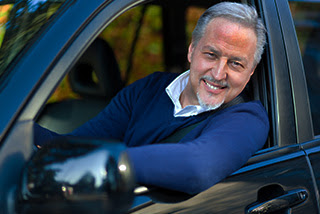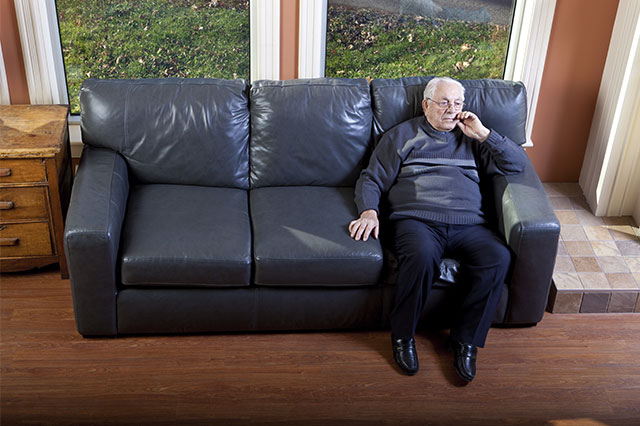Look Who’s Turning 65
July 6—Geoffrey Rush
The Australian actor is the youngest among the few people who have won the "Triple Crown of Acting": the Academy Award, the Primetime Emmy Award and the Tony Award. Born in Australia, Rush began his acting career with Queensland Theatre Company in 1971, appearing in 17 productions. In 2009, he made his Broadway debut in a restaging of Exit the King, for which Rush won several awards, including the 2009 Tony Award for Best Performance by a Leading Actor in a Play. In 2011, Rush played the lead in a theatrical adaptation of Nikolai Gogol's short story The Diary of a Madman and was nominated for the Drama Desk Award.
Rush made his film debut in the Australian film Hoodwink in 1981, and the following year was in Gillian Armstrong's Starstruck. In 1996, he made his breakthrough performance with Shine, winning an Academy Award for Best Actor for his role in an Australian biographical drama film based on the life of pianist David Helfgott, who suffered a mental breakdown and spent years in institutions.
In 1998, Rush appeared in three major films: Les Miserables, Elizabeth and Shakespeare in Love, for which he received his second Academy Award nomination for Best Supporting Actor. In 2000, he received his third Academy Award nomination, for Quills, in which he played the Marquis de Sade. Rush's career continued at a fast pace, with nine films released from 2001 to 2003, including the Pirates of the Caribbean series.
In the 2004 television film The Life and Death of Peter Sellers, Rush won an Emmy Award for Outstanding Lead Actor in a Miniseries or a Movie, as well as other awards. In 2005, he starred in Steven Spielberg's Munich as a Mossad agent. In 2010, Rush played speech therapist Lionel Logue in The King's Speech, a part that earned him a BAFTA and nominations for the Academy Awards and Golden Globe Awards for Best Supporting Actor.
July 8—Anjelica Huston
An actress, director and former fashion model, Huston became the third generation of her family to win an Academy Award, joining her father, director John Huston, and grandfather, actor Walter Huston. Her first notable role was in Bob Rafelson's remake of The Postman Always Rings Twice (1981). Later, her father cast her as the daughter of a Mafia don whose love is scorned by a hit man (Jack Nicholson) in Prizzi's Honor (1985). Huston won the Best Supporting Actress Oscar for her performance, making her the first person in Academy Award history to win an Oscar when a parent and a grandparent had also won one.
Huston earned a Best Actress Oscar nomination for her portrayal of a con artist in Stephen Frears' The Grifters (1990). She also starred as the lead in her father's final directorial film, The Dead (1987). She was then cast as Morticia Addams, in the hugely successful 1991 movie adaptation of The Addams Family. In 1993, she reprised the role for the sequel Addams Family Values. Huston also starred in the 1998 Hollywood blockbuster Ever After: A Cinderella Story and in two Wes Anderson films, The Royal Tenenbaums (2001) and The Life Aquatic with Steve Zissou (2004). In 2012, Huston portrayed a Broadway producer on the NBC television series Smash, and in 2015, appeared in two episodes of the second season of the Amazon Video series Transparent.
Huston has followed in her father's footsteps, directing Bastard Out of Carolina (1996), followed by Agnes Browne (1999), in which she both directed and starred, and then Riding the Bus with My Sister (2005). She was romantically involved with Nicholson from 1973 until 1990. Huston was married to sculptor Robert Graham from 1992 until his death on Dec. 27, 2008.
July 9—Chris Cooper
The film actor is best known for his supporting roles, including in the comedy-drama metafilm Adaptation (2002), for which he won both the Academy Award and Golden Globe Award for Best Supporting Actor. Born in Kansas City, he grew up as a self-described "blue-collar cowpoke." At the University of Missouri, he double-majored in agriculture and drama. After graduation, Cooper moved to New York City to pursue an acting career. His early performances included John Sayles' 1987 film Matewan and the 1989 CBS-TV Western miniseries Lonesome Dove.
Some of his more notable later performances include Money Train, as a psychotic pyromaniac who terrifies toll booth operators; Lone Star, in a rare leading role as a Texas sheriff charged with solving a decades-old case; in director Joel Schumacher's 1996 film A Time to Kill; in 1998's The Horse Whisperer; and in American Beauty, as a homophobic Marine Corps colonel, a role that garnered him a Screen Actors Guild Award nomination for Best Supporting Actor. In 2003, he won an Academy Award for Best Supporting Actor and a Golden Globe Award playing the role of John Laroche in Adaptation. In 2002, Cooper appeared in The Bourne Identity as a ruthless CIA special ops director, a role he reprised in The Bourne Supremacy. Cooper received another Screen Actors Guild Award nomination for his supporting role as racehorse trainer Tom Smith in 2003's Seabiscuit. In 2004, Cooper starred in Silver City, playing an inept Republican gubernatorial candidate.
In 2005, Cooper appeared in three acclaimed films: Jarhead, Capote and Syriana. In 2014, he portrayed Norman Osborn in The Amazing Spider-Man 2 in an uncredited role. He will appear in Ben Affleck's crime drama Live by Night, scheduled for release in October 2017. Cooper resides in Kingston, Mass., with his wife, Marianne Leone Cooper, whom he married in 1983. After their son had cerebral palsy, they became strong advocates for exceptional children.
July 12—Cheryl Ladd
The actress, singer and author is best known for her role as Kris Munroe in the ABC television series Charlie's Angels, replacing Farrah-Fawcett Majors. The popular 1976 to 1981 series followed the adventures of three women working in a private detective agency in Los Angeles. Born in South Dakota, Ladd initially came to Hollywood in 1970 to begin a career in music as a singing voice on Hanna-Barbera's Josie and the Pussycats animated series. She soon began to land non-singing roles in commercials and episodic television, including guest appearances on shows such as The Rookies, The Partridge Family and Happy Days. The Charlie's Angels series made her an overnight star, and Ladd guest-starred in musical-comedy variety series and specials, plus she released three albums, including a Top 40 Billboard Hot 100 single and a Gold record. In 2000, Ladd starred on Broadway in a revival of Irving Berlin's Annie Get Your Gun.
Following Charlie's Angels, Ladd starred in more than 30 made-for-television films, including as Grace Kelly and in Purple Hearts, Millennium and Poison Ivy. Ladd had the lead role in the television series One West Waikiki (1994–96), and made guest appearances in other TV shows. She’s published two books: the children's book The Adventures of Little Nettie Windship (1996) and Token Chick: A Woman’s Guide to Golfing With the Boys (2005).
July 24—Lynda Carter
The actress, singer, songwriter and beauty pageant titleholder starred in the TV series Wonder Woman from 1975 to 1979. In 1978, Carter was voted "The Most Beautiful Woman in the World" by the International Academy of Beauty and the British Press Organization. Carter started out by winning a local Arizona beauty contest and gained national attention in the United States by winning Miss World USA, representing Arizona. After taking acting classes at several New York acting schools, she made her first acting appearance on the 1974 police drama Nakia. She then began making appearances on such TV shows as Starsky and Hutch and Cos, and in several "B" movies.
Carter's acting career took off when she landed the starring role on Wonder Woman as the title character and her secret identity, Diana Prince. Carter's earnest performance endeared her to fans and critics, such that Carter continues to be closely identified with Wonder Woman. Credits since then include the title role in Rita Hayworth: The Love Goddess (1983) and a variety of her own musical TV specials, including Lynda Carter's Special (1980) and Body and Soul (1984). Throughout the 1990s, Carter appeared in a string of television movies. In 2001, she was cast in the independent comedy feature Super Troopers as Vermont Governor Jessma, and played a washed-up, former beauty queen in The Creature of the Sunny Side Up Trailer Park (2004). Carter made her first appearance in a major feature film in numerous years in the big-screen remake of The Dukes of Hazzard (2005).
In 2005, Carter played "Mama Morton" in the West End London production of Chicago. In 2007, Carter toured the U.S. with her one-woman musical cabaret show, An Evening with Lynda Carter. In June 2009, her second album, At Last, was released and reached No. 10 on Billboard's Jazz Albums Chart. In June 2011, she released her third album, Crazy Little Things, Carter is married to Washington, D.C, attorney Robert A. Altman, and they have two children. They live in Potomac, Md.
Source: Wikipedia
FAMOUS & 65 is a featured article in the July 2016 Senior Spirit newsletter.
Blog posting provided by Society of Certified Senior Advisors
www.csa.us














